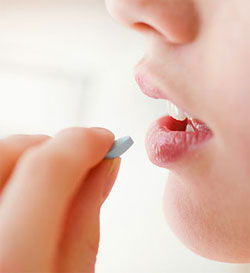
A study has established that potassium intake improved blood pressure in teen girls. Eating 3,000 mg per day of salt or more appears to have no adverse effect on blood pressure in adolescent girls, while those girls who consumed 2,400 mg per day or more of potassium had lower blood pressure at the end of adolescence, according to an article published online by JAMA Pediatrics.
The scientific community has historically believed most people in the United States consume too much salt in their diets. The current Dietary Guidelines for Americans recommends limiting sodium intake to less than 2,300 mg per day for healthy individuals between the ages of 2 and 50. The relationship between dietary sodium and blood pressure in children and adolescents is largely unexamined in prospective studies, according to the study background.
Lynn L. Moore, D.Sc., M.P.H., of the Boston University School of Medicine, and coauthors examined the long-term effects of dietary sodium and potassium on blood pressure at the end of adolescence. The authors used data from the National Heart, Lung and Blood Institute’s Growth and Health Study and participants included 2,185 black and white girls (ages 9 to 10) who were followed up for 10 years.
The authors found no evidence that higher sodium intakes (3,000 to <4,000 mg per day and ?4,000 mg per day vs. < 2,500 mg per day) had an adverse effect on adolescent blood pressure. Some analysis showed that those girls consuming 3,500 mg per day or more of salt had generally lower diastolic blood pressures than girls who consumed less than 2,500 mg per day. Food consumption was based on self reports and blood pressure was measured annually.
Overall, girls in the highest category of potassium intake (2,400 mg per day or more) had lower late-adolescent systolic and diastolic blood pressure than those girls who consumed less potassium, the results show.
Girls who consumed the most sodium and potassium consumed the most calories too, along with the most dairy, fruits, vegetables and fiber, according to the results.
“This prospective study showed that black and white adolescent girls who consumed more dietary potassium had lower BPs [blood pressures] in later adolescence. In contrast, the data indicated no overall effect of sodium intake alone on BP, and, thus do not support the call for a global reduction in sodium intake among children and adolescents. This study emphasizes the need to develop methods for estimating salt sensitivity to be used in future studies of high-risk populations and points to the potential health risks associated with the existing low dietary potassium intakes among U.S. children and adolescents,” the study concludes. The study is provided by The JAMA Network Journals.